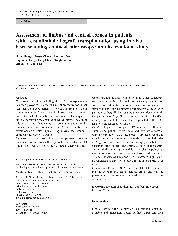摘要
Background Keratolimbal allograft (KLAL) transplantation has been proved to be a useful surgical procedure for limbal stem cell deficiency patients. However, information about in vivo ocular surface changes in those patients is limited, due to the lack of a reliable and non-invasive technique for closely monitoring the changes of KLAL grafts. The aim of this study is to characterize the cellular changes in the limbus and central cornea after KLAL in patients with severe ocular chemical injury, using in vivo laser scanning confocal microscopy (LSCM). @@@ Methods This is a prospective, noncomparative, observational case series. Twenty-three patients (23 eyes) with total limbal stem cell deficiency due to ocular chemical injury were recruited. KLAL with or without other concurrent surgery were performed. LSCM and slit-lamp examination were performed on the limbus and the central cornea before surgery and at 6 and 12 months postoperatively. Presence of palisades of Vogt, limbal basal epithelial cell density within the palisades of Vogt (LEC), limbal dendritic cells (DC) density, and central corneal basal epithelial cell (CEC) density were assessed by LSCM. @@@ Results All patients completed 12 months of follow-up. Twenty-one patients were male and two were female, with a mean age of 39.5 +/- 12.5 years. Six cases were due to acid burns, and the others were alkali burns. Palisades of Vogt were observed in all surviving grafts but were absent in graft failure. The epithelial cells in the central cornea of the failed graft had lost the classic polygonal morphology of the normal corneal basal epithelial cells. The cell density of LEC and CEC decreased significantly, whereas DC density increased in the failed grafts over time. @@@ Conclusions In vivo LSCM is a useful tool for monitoring the cellular changes in KLAL grafts, and has the potential to diagnose the failure of KLAL grafts at the cellular level.
- 出版日期2011-5
- 单位复旦大学
